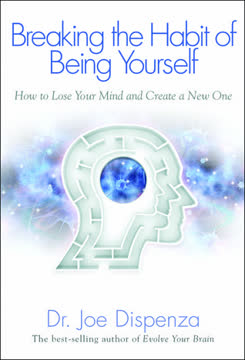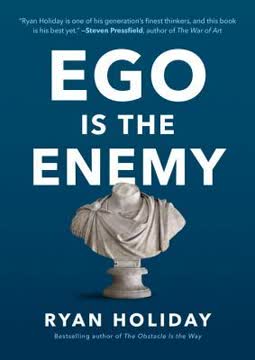Key Takeaways
1. Polymathy: The art of mastering multiple disciplines
"Being a polymath does require something of a perspective shift: rather than running as far as you can in a single race, you open your field of perception to take in as much as possible, and draw atypical connections to link the knowledge you already have in surprising ways."
Embracing diversity of knowledge. Polymathy is the pursuit of expertise across multiple disciplines, combining depth and breadth of knowledge. Unlike specialists who focus on a single field, polymaths cultivate a wide range of skills and interests, allowing them to make unique connections and solve complex problems.
Benefits of polymathy:
- Enhanced creativity and innovation
- Improved problem-solving abilities
- Greater adaptability to change
- Increased career opportunities
- Deeper understanding of complex systems
Developing a polymathic mindset: To become a polymath, one must cultivate curiosity, embrace learning across diverse fields, and actively seek connections between seemingly unrelated concepts. This approach requires a willingness to step outside one's comfort zone and challenge conventional wisdom.
2. The Renaissance mindset: Adaptability and openness
"Polymaths find themselves in their position because of their natural intellectual curiosity. They don't deliberately set out to develop a particular skills profile, but allow it to grow organically based on their own innate limitations, the emerging opportunities around them, their skills and passions, the demand from the environment, and so on."
Cultivating intellectual curiosity. The Renaissance mindset embodies adaptability, openness, and a thirst for knowledge. It encourages individuals to explore diverse interests and embrace new challenges without fear of failure or judgment.
Key characteristics of the Renaissance mindset:
- Intellectual curiosity and a love of learning
- Willingness to challenge assumptions and question the status quo
- Comfort with uncertainty and ambiguity
- Ability to see connections between disparate fields
- Openness to new experiences and perspectives
Developing this mindset requires practice and self-reflection. It involves regularly exposing oneself to new ideas, engaging in interdisciplinary thinking, and cultivating a growth mindset that views challenges as opportunities for learning and growth.
3. From novice to expert: A 10-step learning process
"Teaching is crucial if you truly desire a deeper grasp of your subject matter, and if you really want to challenge your understanding to strengthen it further."
Systematic approach to learning. The book outlines a 10-step process for mastering new skills and knowledge, emphasizing the importance of structured learning and deliberate practice.
Key steps in the learning process:
- Gain a broad overview
- Narrow the scope
- Define success criteria
- Compile resources
- Create a curriculum
- Filter and curate resources
- Dive in and immerse yourself
- Explore and play
- Clarify and deepen understanding
- Teach others
This approach encourages learners to move beyond passive consumption of information and actively engage with new concepts. By following these steps, individuals can develop a deeper understanding of any subject and accelerate their learning process.
4. The power of combinatory play and skill stacking
"Einstein came up with the term combinatory play to describe the intangible process in which his favorite pastime led to ideas that revolutionized the whole of scientific thought."
Synergy of diverse skills. Combinatory play and skill stacking are powerful techniques that leverage the interconnectedness of different disciplines to generate innovative ideas and solve complex problems.
Benefits of combinatory play and skill stacking:
- Enhanced creativity and problem-solving abilities
- Unique competitive advantage in the job market
- Ability to approach challenges from multiple perspectives
- Increased adaptability to changing environments
- Potential for groundbreaking innovations
To harness these techniques, individuals should actively seek connections between their various interests and skills, experiment with applying knowledge from one field to another, and cultivate a diverse skill set that complements their primary expertise.
5. Standing on the shoulders of giants: Lessons from historical polymaths
"Polymaths don't waste time identifying as anyone in particular—they see their identities as whatever they need to be to help them do whatever it is they want to do."
Learning from great minds. The book highlights several historical polymaths, including Leonardo da Vinci, Johann Wolfgang von Goethe, and Thomas Young, to illustrate the power of diverse knowledge and interdisciplinary thinking.
Key lessons from historical polymaths:
- Embrace curiosity and lifelong learning
- Challenge conventional wisdom and explore new ideas
- Cultivate expertise across multiple disciplines
- Seek connections between seemingly unrelated fields
- Apply knowledge creatively to solve complex problems
By studying the lives and achievements of these remarkable individuals, modern learners can gain inspiration and insights into developing their own polymathic abilities and mindset.
6. Intentional discovery: Exploring diverse interests strategically
"Polymaths, by setting these limitations far less often, allow themselves greater access to new realms. They don't care if a certain idea, behavior or question isn't for people like them, and they certainly aren't afraid to change their minds or question whether a previous preference is still useful."
Strategic exploration of interests. Intentional discovery involves consciously seeking out new experiences, knowledge, and skills that complement and enhance one's existing expertise.
Approaches to intentional discovery:
- Identify gaps in your knowledge or skill set
- Explore fields adjacent to your current areas of expertise
- Seek out novel experiences and challenges
- Engage in cross-disciplinary collaborations
- Regularly reassess and update your learning goals
By approaching learning and exploration strategically, individuals can maximize the benefits of their diverse interests and create unique combinations of skills and knowledge that set them apart in their personal and professional lives.
7. The polymath advantage: Creativity, problem-solving, and innovation
"Being a polymath does not only distract from your efficacy in your chosen discipline(s), it may well positively benefit your success in at least one of those fields."
Leveraging diverse knowledge. The polymath advantage lies in the ability to approach problems from multiple angles, draw insights from various disciplines, and generate innovative solutions that specialists may overlook.
Key advantages of polymathy:
- Enhanced creativity and out-of-the-box thinking
- Improved problem-solving abilities
- Greater adaptability to complex challenges
- Unique perspectives on existing issues
- Ability to bridge gaps between different fields
To cultivate the polymath advantage, individuals should actively seek opportunities to apply their diverse knowledge to real-world problems, engage in interdisciplinary collaborations, and continuously expand their skill set and knowledge base.
Last updated:
FAQ
What's "Polymath: Master Multiple Disciplines, Learn New Skills, Think Flexibly, and Become Extraordinary Autodidact" about?
- Overview: The book by Peter Hollins explores the concept of polymathy, which involves mastering multiple disciplines and developing a flexible, adaptable mindset.
- Purpose: It aims to guide readers on how to become extraordinary autodidacts, or self-taught individuals, by learning new skills and thinking creatively.
- Structure: The book is divided into chapters that cover the mindset of a polymath, steps to become one, and historical examples of famous polymaths.
- Goal: Ultimately, it encourages readers to cultivate a well-rounded skill set that can be applied across various fields for personal and professional growth.
Why should I read "Polymath" by Peter Hollins?
- Skill Development: The book provides practical steps to develop a diverse set of skills, making you more versatile and competitive in various fields.
- Mindset Shift: It encourages a shift from specialization to a broader, more integrated approach to learning and problem-solving.
- Historical Insights: By examining historical polymaths, the book offers inspiration and lessons on how to apply their strategies in modern contexts.
- Personal Growth: It emphasizes the importance of lifelong learning and adaptability, which are crucial in today's rapidly changing world.
What are the key takeaways of "Polymath" by Peter Hollins?
- Diverse Knowledge: Embrace a wide range of interests and skills to become more adaptable and innovative.
- Beginner's Mindset: Maintain curiosity and openness to new experiences, even in areas where you are already knowledgeable.
- Skill Stacking: Combine multiple skills to create a unique value proposition, rather than relying on being the best in one area.
- Fearlessness and Authenticity: Pursue your interests boldly and authentically, without being constrained by conventional labels or expectations.
How does Peter Hollins define a polymath in "Polymath"?
- Definition: A polymath is someone who has learned much and is accomplished in multiple disciplines, thriving in the field of human inquiry itself.
- Renaissance Men: They are often referred to as "Renaissance men," capable of blending academic fields or creating new ones from scratch.
- Superpowers: Polymaths seem to possess superpowers due to their prowess in multiple realms of knowledge, inspiring others to imagine the limits of human understanding.
- Learnable Quality: Hollins emphasizes that polymathy is not an inherent quality but can be learned and cultivated by anyone.
What is the "Einstellung effect" mentioned in "Polymath"?
- Definition: The Einstellung effect describes the phenomenon where existing knowledge and expertise can hinder creative problem-solving.
- Fixed Thinking: It occurs when experts rely too heavily on their established knowledge, making it difficult to see alternative solutions.
- Example: The book cites experiments where experts failed to find simpler solutions because they were stuck in their preconceived methods.
- Polymathic Approach: By diversifying knowledge and maintaining a beginner's mindset, polymaths can avoid this effect and remain open to new ideas.
What is the "10-step process" for becoming a polymath in "Polymath"?
- Broad Overview: Start by gaining a broad understanding of the subject you wish to learn.
- Narrow the Scope: Focus on specific areas within the subject that interest you the most.
- Define Success: Clearly define what success looks like for you in mastering this subject.
- Compile Resources: Gather a wide range of resources to support your learning journey.
How does "Polymath" suggest using notes effectively?
- Second Brain: Notes function as a second brain, helping you organize, review, and synthesize information.
- Four-Step Method: The book recommends a four-step method: detailed notetaking, summarizing in your own words, connecting to the larger lesson, and answering remaining questions.
- Active Engagement: This method encourages active engagement with the material, making it easier to retain and apply knowledge.
- Deep Understanding: By revisiting and transforming information multiple times, you achieve a deeper understanding of the subject.
What is "skill stacking" according to "Polymath"?
- Concept: Skill stacking involves combining multiple skills to create a unique value proposition, rather than excelling in just one area.
- Top Percentile: Aim to be in the top 10-15% of several skills, rather than the top 1% of one skill.
- Synergy: The skills should be related or complementary, enhancing each other to make you more competitive.
- Practical Example: The book uses Scott Adams, creator of Dilbert, as an example of someone who successfully used skill stacking.
What is "combinatory play" as discussed in "Polymath"?
- Einstein's Method: Combinatory play is a concept introduced by Albert Einstein, involving the combination of different disciplines to spark creativity.
- Cross-Disciplinary: It encourages engaging in activities outside your main field to gain new perspectives and insights.
- Creative Breakthroughs: By combining elements from different areas, you can arrive at innovative solutions and ideas.
- Practical Application: The book suggests using combinatory play to enhance problem-solving and creativity in your own pursuits.
How does "Polymath" address the fear of failure?
- Experimental Mindset: The book encourages adopting an experimental mindset, viewing failures as opportunities for learning and growth.
- Redefining Failure: Failure is reframed as a necessary part of the learning process, not a reflection of personal inadequacy.
- Resilience: Polymaths are described as resilient individuals who thrive in conditions of uncertainty and change.
- Focus on Process: Emphasize the joy of the learning process itself, rather than fixating on outcomes or achievements.
What are some historical examples of polymaths mentioned in "Polymath"?
- Leonardo da Vinci: Known for his contributions to art, science, and engineering, da Vinci is the quintessential polymath.
- Johann Wolfgang von Goethe: A celebrated writer and scientist, Goethe made significant contributions to literature and natural sciences.
- Thomas Young: Known for his work in physics, medicine, and linguistics, Young exemplifies the diverse interests of a polymath.
- Imhotep: An ancient Egyptian polymath, Imhotep was a physician, architect, and engineer, known for designing the first pyramid.
What are the best quotes from "Polymath" by Peter Hollins and what do they mean?
- "The quest of polymathism is something that could very well boost your life to new heights." This quote emphasizes the transformative potential of becoming a polymath.
- "Being a polymath is actually easier, from this point of view." It suggests that achieving proficiency in multiple areas can be more attainable than mastering one.
- "Polymaths will not only engage with life in deeply fulfilling ways, they’ll bring value to others in ways that are directly profitable to them." This highlights the personal and professional benefits of polymathy.
- "Growth is exponential, when your strategy is combinatorial." This quote underscores the power of combining diverse skills and knowledge for exponential growth.
Review Summary
Polymath receives mixed reviews with an average rating of 3.74/5. Readers appreciate the book's introduction to polymathy and its benefits, but criticize repetition and lack of depth. Some find it motivating and informative, especially for beginners, while others feel it falls short on practical guidance. The book's strengths include its organization, chapter summaries, and historical examples of polymaths. Critics argue it oversimplifies the path to becoming a polymath and focuses too much on career advancement rather than intellectual curiosity.
Similar Books










Download PDF
Download EPUB
.epub digital book format is ideal for reading ebooks on phones, tablets, and e-readers.













